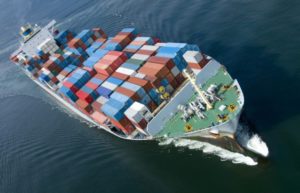News & Insights
CBP Issues the Travel and Trade Report for FY2019 Highlighting Its Current Trade Priorities and Compliance Enforcement Initiatives
On January 30th, U.S. Customs and Border Protection (CBP) published the Trade and Travel Report summarizing its current priorities, facilitation and enforcement efforts in Fiscal Year 2019 (FY2019). CBP fulfills the dual role of trade facilitation and revenue protection, and is the second largest source of revenue for the U.S. federal government. The agency enforces nearly 500 U.S. trade laws and regulations on behalf of 49 partner government agencies. U.S. importers in particular should be aware of CBP’s current trade compliance priorities and enforcement initiatives, and review their current operations to foster compliance and avoid potential liability for violations of the import laws and regulations. The following table provides highlights from the FY2019 report—
| Import Summary and Duty Collection |
· Nearly $716 million in Section 201 duties; |
| Increase in Binding Ruling Requests | With the increase of additional duties, CBP saw an uptick in importers’ requests for binding rulings on the proper tariff classification, valuation and country of origin of their merchandise. The National Commodity Specialist Division issued 21% more rulings than in FY2018. |
Antidumping and Countervailing Duty (AD/CVD) Enforcement
|
|
| AD/CVD Evasion | CBP received and acted upon 78 e-Allegations concerning the evasion of AD/CVD orders originating from interagency referrals. In addition, through the Enforce and Protect Act The Enforce and Protect Act (EAPA) program, in which interested parties may electronically submit allegations of evasion of AD/CV orders, CBP received 38 new allegations, initiated 36 EAPA investigations, conducted 21 foreign onsite visits, and issued final determinations for 7 investigations. |
| Forced Labor |
· Seafood caught by a Republic of Vanuatu fishing vessel; |
| CBP E-Commerce Strategy | CBP processes over 600 million express consignment and international mail shipments stemming from e-commerce transactions each year, equating to approximately 1.8 million shipments a day. Adversaries seek to exploit this volume, presenting CBP with economic risks in the form of IPR infringement as well as safety risks from poor quality and untested consumer products. In FY2019, over 90% of IPR seizures were found in express and international mail shipments. As part of the agency’s E-Commerce Strategy, CBP—
|
| IPR Enforcement | Through the recordation of trademarks and copyrights by U.S. companies, CBP enforces their IPR at the border, detaining and seizing goods that are potentially infringing. As of September 30, 2019, CBP was enforcing 18,735 recorded copyrights and trademarks and seized 27,599 shipments with IPR violations. |
| Commercial Targeting and Analysis Center (CTAC) Efforts | The Commercial Targeting and Analysis Center (CTAC), led by CBP, is comprised of multiple, co-located government agencies responsible for targeting and intercepting commercial shipments that pose a threat to the health and safety of Americans. Since 2010, more than 100,000 shipments of unsafe consumer and industrial goods, violative food and drug products, and other contraband have been targeted at ports nationwide and prevented from entering the U.S. commerce. During FY2019, CTAC facilitated efforts that led to 7,211 seizures of products, valued at nearly $35.2 million, posing health and safety risks to the American public. CTAC activities also resulted in 595 seizures involving wildlife trafficking violations and 22 seizures of illicit importations of cultural property. |
| Automated Commercial Environment (ACE) Modernization | CBP’s efforts to simplify the Automated Commercial Environment (ACE), CBP’s cargo processing system, resulted in an estimated economic benefit of approximately $537 million for the trade community and $106 million for CBP in FY2019, an increase of 38% in savings for the trade community and 200% in savings for CBP over FY2018. ACE also reduced processing times by 690,000 hours for the trade community and 1,896,000 hours for CBP. |
| Blockchain Technology Innovation | In September 2019, CBP launched its second proof of concept to test blockchain technology in an IPR scenario. The proof of concept used two new data elements: a legal entity identifier to verify corporations; and, a globally unique product identifier to authenticate products at the retail level. As part of the testing, members of the trade community verified that the licensing entities of imported goods (i.e., importer, manufacturer, or retailer) were legitimate. The test proved that CBP could facilitate legitimate trade by having the right holder attest to the validity of the licensing relationship. Another aspect of the pilot involved a consumer test, where CBP used mobile technology to verify branded products were legitimate. Using blockchain technology, companies were able to communicate directly with consumers on the validity of the product. In the future, a consumer could scan a product and receive an instantaneous determination on its legitimacy. All of the initial tests were successful and feedback from the government and trade participants was positive. |
| Use of Non-Intrusive Inspection (NII) Technology | CBP law enforcement personnel use non-intrusive inspection systems (NII) and radiation detection equipment to inspect conveyances and vehicles for the presence of contraband and illicit radiological materials. The average NII examination of a cargo container takes approximately 8 minutes, while a physical inspection takes 120 minutes on average. The time saved using NII and radiation detection equipment saves CBP $1 billion in annual operations and saves industry $5.8 billion to $17.5 billion in costs due to delays. In FY2019—
|
| International Mail | The U.S. Postal Service receives international mail from more than 190 countries. In FY2019, 63 countries provided advance electronic data to the U.S. Postal Service, which was then passed on to CBP. The advance data helps CBP expedite the flow of commerce because that data allows CBP to target only those shipments that are deemed high-risk. In FY2019, CBP received advance electronic data on 306 million international postal shipments (a 3% increase from the number of international postal shipments with advanced electronic data in FY2018). With nearly half a billion international mail shipments each year, the need for advance electronic data is critical for CBP. Having the data available frees up officers so they can focus on the highest risk shipments and facilitate the movement of goods. |
| Opioid Detection Challenge | In February 2019, CBP launched the Opioid Detection Challenge, a global prize competition seeking new, innovative solutions to detect opioids being trafficked into the U.S.. The competition, which will award a total of $1.55 million in prize money, was a collaborative effort among CBP, the DHS Science and Technology Directorate, the Office of National Drug Control Policy, and the U.S. Postal Inspection Service. The Opioid Detection Challenge called upon innovators to submit novel plans for rapid, nonintrusive detection tools that will help find illicit opioids being sent through the international mail or express environments. A major goal of the competition was to create a system that can detect and identify narcotics within a package before a CBP officer opens it. The competition was part of a comprehensive government effort to stop the flow of illicit drugs coming into the U.S. and address the opioid addiction crisis. Winners will be announced in FY2020. |
| Historic Cargo Seizure | On June 17, 2019, CBP officers at the Philadelphia seaport netted the largest cocaine seizure in the 230-year history of the U.S. Customs Service and CBP. Nearly 20 tons of cocaine were found in shipping containers aboard a Liberian-flagged container ship. The cocaine had an estimated street value of $1.3 billion. While conducting an at-sea joint examination aboard the vessel, authorities from CBP, HSI, and the U.S. Coast Guard detected anomalies in seven shipping containers. The boarding team escorted the ship to its berth in South Philadelphia and continued its inspection. After the 15 containers were unloaded from the vessel, CBP confirmed the presence of anomalies. A combined 15,582 bricks, containing 39,525 pounds of a white, powdery substance, tested positive for cocaine. CBP seized the cocaine as well as $56,330 found on the vessel, believed to be proceeds from illegal activity. HSI agents made six arrests and continued their investigation. The U.S. Attorney’s Office for the Eastern District of Pennsylvania began prosecuting the case in July 2019. The contents of the shipping containers included wine, coated paperboard, vegetable extracts, and dried nuts from Chile, carbon black from Colombia, and scrap metal batteries from United Arab Emirates. The ship made port calls to Chile, Peru, Panama, and the Bahamas before arriving in Philadelphia. |
| Customs Trade Partnership Against Terrorism (C-TPAT) | The Customs Trade Partnership Against Terrorism (C-TPAT) is a voluntary public-private sector partnership program, which recognizes that CBP can provide the highest level of cargo security only through close cooperation with the principle stakeholders of the international supply chain such as importers, exporters, carriers, consolidators, licensed customs brokers, and manufacturers. Today, nearly 11,600 certified partners have been accepted into the program. In FY2019—
|
| Agriculture Inspections | CBP agriculture specialists examined agriculture imports for potential pests and diseases, incorrectly manifested and smuggled items, and prohibited animal products and byproducts. As part of their inspection process, CBP agriculture specialists examine wood packaging materials associated with cargo to search for wood boring insects such as Asian longhorned beetles. They also inspect containers and conveyances for hitchhiker pests such as Asian gypsy moths and exotic fruit flies as well as for contamination from prohibited weed seeds, food scrap, or soil. CBP agriculture specialists also are trained to identify and contain emerging and rapidly evolving biological threats that are dangerous to America. During FY 2019—
|
The full report can be found at: https://www.cbp.gov/document/annual-report/cbp-trade-and-travel-fiscal-year-2019-report.
If you have any questions relating to CBP’s FY2019 Travel and Trade Report, CBP’s enforcement efforts, or other customs compliance-specific issues, please contact Miller Proctor Law PLLC (https://millerproctorlaw.com ).
News & Insights

Amendments to the Federal Maritime Commission Regulations Governing Non-Vessel Common Carrier Negotiated Rate Arrangements and Negotiated Service Arrangements Are Now in Effect
As of August 22, 2018, per the final rule in FMC Docket 17-10, the Federal Maritime Commission (“FMC”) will now allow Negotiated Rate Arrangements (“NRAs”) to be amended at any time, to be accepted by booking a shipment and to

Midsummer Update on U.S. Trade and Tariff Actions under Sections 232 and 301
As we near the mid-point of the summer, we thought it would be wise to provide an update on the various U.S. trade and tariff actions under Sections 232 and 301 in case either the Arizona heat or the humidity


